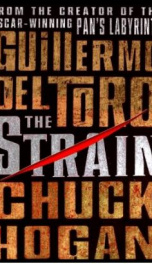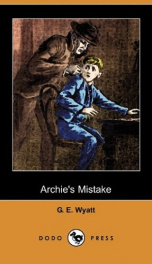Wright Harold Bell

Harold Bell Wright (May 4, 1872 – May 24, 1944) was a best-selling American writer of fiction, essays, and non-fiction during the first half of the 20th century. Although mostly forgotten or ignored after the middle of the 20th century, he is said to have been the first American writer to sell a million copies of a novel and the first to make $1 million from writing fiction. Between 1902 and 1942 Wright wrote 19 books, several stage plays, and many magazine articles. More than twenty one movies were made or claimed to be made from Wright's stories, including Gary Cooper's first major movie, The Winning of Barbara Worth (1926) and the John Wayne film, The Shepherd of the Hills (1941). Wright was born in Rome, Oneida County, New York to William A. and Anna Watson Wright. In his autobiography, To My Sons, Wright reports that his father, a former Civil War lieutenant and lifetime alcoholic, dragged "his wife and children from place to place, existing from hand to mouth, sinking deeper and deeper, as the years passed, into the slough of wretched poverty." His mother, on the other hand, paid close attention to the children, taught them moral principles and read to them from the Bible, Shakespeare, The Pilgrim's Progress and Hiawatha. From his mother Wright learned to appreciate the beauties of nature. When a neighbor taught young Wright to draw and paint, his mother nourished his artistic talents. When Wright was eleven years old his mother died and his father abandoned the children. For the remainder of his childhood Wright lived with various relatives or strangers, mostly in Ohio. He found odd jobs here and there, frequently sleeping under bridges or in haystacks. In his late teens he found regular employment painting both works of art and houses. After two years of what Wright called "pre-preparation" education at Hiram College in Hiram, Ohio, Wright became a minister for the Christian Church (Disciples of Christ) in Pierce City, Missouri. Other churches he pastored were located in Pittsburg, Kansas; Forest Avenue in Kansas City, Missouri; Lebanon, Missouri; and Redlands, California. In 1902, while pastoring the Christian Church in Pittsburg, Kansas, he wrote a melodramatic story, entitled That Printer of Udell's, which he intended to read to his congregation, one chapter per week, at successive Sunday night meetings. But before he read it to his congregation, the story was published in serial form in The Christian Century, his denomination's official journal. Wright despised the magazine version so much that he "hid the poor mutilated corpse in the bottom of the least used drawer of my desk and moved on to other things" (To My Sons, P. 213). But Parishioners enjoyed the story so much that they encouraged him to publish it in book form, which he did. But it was Wright's second novel, The Shepherd of the Hills, published in 1907 and set in Branson, Missouri, that established him as a best-selling author. That book also attracted a growing stream of tourists to the little-known town of Branson, resulting in its becoming a major tourist destination. In 1907, after the success of The Shepherd of the Hills (his first book to sell one million copies), Wright resigned as pastor of the Redlands, California, Christian Church, moved to a ranch near El Centro, California, and devoted the rest of his life to writing popular stories. In 1912 he published his most popular book, The Winning of Barbara Worth, a historical novel set in the Imperial Valley of southeastern California. Wright did not leave the ministry only because he could make more money writing fiction. In most of his novels, beginning with That Printer of Udell's, he attacked the hypocrisy and impractical nature of popular churches. To Wright, hard work, integrity and concrete efforts to aid people in need were far more important than church doctrines or sermons. In 1909, pastors across America were incensed by his third book, The Calling of Dan Matthews, which told the story of a young preacher who, like Wright, resigned from the ministry in order to retain his integrity. In 1910 Alexander Corkey wrote a novel that countered Wright's message. In The Victory of Allen Rutledge: A Tale of the Middle West, another young pastor in another midwestern town, faces moral challenges similar to those faced by Wright's hero. But in Corkey's book the pastor takes a courageous stand for principle, reforms the church and remains in the ministry. Though Wright's book quickly sold a million copies, Corkey's remained largely unknown. Wright never responded to his critics, except to say that he never intended to create great literature, only to minister to ordinary people. From 1916 to about 1935 Wright lived mostly in Tucson, Arizona. Wright's land on Tucson's eastside was subdivided and the streets bear some of the names of his fictional characters such as Printer Udell, Barbara Worth, and Marta Hillgrove. His home has been restored and is now a private residence. From 1935 until his death in 1944, Wright lived on his "Quiet Hills Farm" near Escondido, California. But whatever city he called home, he traveled much, staying for months at a time in primitive camps, vacation homes, hotels or resorts, in such places as Riverside, San Diego, Palm Springs and Benbow, California, Tucson and Prescott, Arizona, Hawaii, and the Barbados. Wright usually lived one or two years in a location before using it as the setting for one of his novels. After struggling most of his life with lung disease, Wright died of bronchial pneumonia in Scripps Memorial Hospital in La Jolla, California. He was buried in Cathedral Mausoleum, Greenwood Memorial Park, San Diego, California. In 1945 Frank Luther Mott developed a system to compare top selling books from 1665 (Golden Multitudes, the Story of Bestsellers in the United States). To make comparisons possible, Mott defines a bestseller as a book with sales equal to one percent of the U.S. population. His ranking: Scott and Dickens were not American authors, and Gardner came much later than Wright. By Mott's reckoning Harold Bell Wright was one of only three American authors to write five best sellers from the arrival of the pilgrims in America through the first quarter of the 20th century. And Wright's total book sales were higher than Cooper and Porter. No American beat, or quite matched, Harold Bell Wright's record until Erle Stanley Gardner, whose career peaked 30 years after Wright's. Wright's biographer, Lawrence V. Tagg (Harold Bell Wright: Storyteller to America, Westernlore Press, 1986), gathered a collection of contemporary attacks on Wright. Owen Wister’s comments are representative: “I doubt if the present hour furnishes any happier symbols [of the quack novel] than we have in Mr. Wright [and The Eyes of the World]. It gathers into its four hundred and sixty pages all the elements ...of the quack-novel. It is,” Wister says, “stale, distorted, a sham, a puddle of words,” and “a mess of mildewed pap.” It was also number one on the Publisher's Weekly bestseller list for 1914. In 1946, Irvin Harlow Hart wrote, "Harold Bell Wright supplied more negative data on the literary quality of the taste of the fiction reading public than any other author. No critic has ever damned Wright with even the faintest praise." (Hundred Leading Authors, p. 287)
do you like this author?
What readers are saying
What do you think? Write your own comment on this book!
write a commentWhat readers are saying
What do you think? Write your own comment on this author!
write a commentBook list

Helen of the Old House
Series:
Unknown
Year:
Unknown
Raiting:
2/5
Purchase of this book includes free trial access to www.million-books.com where you can read more than a million books for free. This is an OCR edition with typos. Excerpt from book: CHAPTER II LITTLE MAGGIE'S PRINCESS LADY BY nine out of ten of the Millsburgh people, the Interpreter would be described as a strange character. But the judge once said to the cigar-store philosopher, when that worthy had so spoken of the old basket maker, "Sir, the Interpreter is more than a character; he is a conviction, a conscience, an institution." It was about the time when the patents on the new process were issued that the Interpreter-or Wallace Gordon, as he was then knownappeared from no one knows where, and went to work in the Mill. Because of the stranger's distinguished appearance his evident culture, and his slightly foreign air, there were many who sought curiously to learn his history. But Wallace Gordon's history remained as it, indeed, remains still, an unopened book. Within a few months his ability to speak several of the various languages spoken by the immigrants who were drawn to the manufacturing city caused his fellow workers to call him the Interpreter. Working at the same bench in the Mill with Adam Ward and Peter Martin, the Interpreter naturally .saw much of the two families that, in those days lived such close neighbors. Sober, hard working modest in his needs, he acquired, during his first year in the Mill, that little plot of ground on the edgeof the cliff, and built the tiny hut with its zigzag stairway. But often on a Sunday or a holiday, or for an hour of the long evenings after work, this man who was so alone in the world would seek companionship in the homes of his two workmen friends. The four children, who were so much together that their mothers used to say laughingly they could scarcely tell which were Wards and which were Martins, claimed the Interpreter as their own. With his never-failing fund of stories, his intimate acquainta...
Show more
add to favoritesadd In favorites
What readers are saying
What do you think? Write your own comment on this author!
write a commentif you like Wright Harold Bell try:
readers also enjoyed
What readers are saying
What do you think? Write your own comment on this author!
write a commentGenre
if you like Wright Harold Bell try:
readers also enjoyed
Do you want to read a book that interests you? It’s EASY!
Create an account and send a request for reading to other users on the Webpage of the book!











